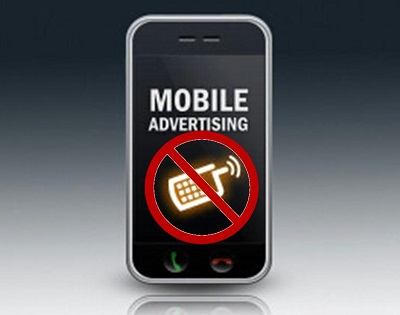As ad blocking apps become more popular, marketers are working on more appealing alternatives.
As ad blocking apps have suddenly exploded in popularity – particularly now that they have been permitted on iPhones and other iOS devices – mobile marketing firms have found themselves taking a cold hard look at the techniques that they have been using to reach consumers, and what they can do to overcome being potentially blocked.
Advertisers are finding themselves experimenting with different ways to reach customers over smartphones.
A growing belief is that mobile marketing companies will need to start looking for new, relevant, context-driven techniques to connect with consumers in a way that is appealing enough that they will not want to take measures to block them off. Two areas that many feel will be grabbing a great deal of focus will be in-app advertising and branded content. While it is too early to tell precisely what the top methods will be, these are some of the main guesses, so far.
At this point, it has not yet reached the point in which mobile marketing budgets are being slashed back.
 So far, ad blocking apps haven’t had enough of an impact to stop industry execs from wanting to spend over this channel. That said, there is still a risk that a reduction in mobile web ad inventory could occur as publishers and advertisers gauge the impact of ad blockers and attempt to find other methods of reaching consumers in which they are less likely to be blocked.
So far, ad blocking apps haven’t had enough of an impact to stop industry execs from wanting to spend over this channel. That said, there is still a risk that a reduction in mobile web ad inventory could occur as publishers and advertisers gauge the impact of ad blockers and attempt to find other methods of reaching consumers in which they are less likely to be blocked.
According to A.T. Kerney media and technology practice partner, Greg Portell, “Budgets will continue to shift to mobile as they catch up with the shift in eyeballs.” He added that “There should be a period of time with spend in mobile rising regardless of ad tech.” Portell pointed out that there has been some worry expressed over the risks associated with ad blocking software, which will help to drive experimentation to a greater degree than has been the norm until now.
He feels that there will likely be a rise in branded and native sponsored content. He also underscored the importance of providing consumers with relevant communications within an appropriate context, saying that it “transcends ad blocking”
A new white paper has been released that shows that the market will grow by 27.2 percent this year.
The Korea Internet & Security Agency has now published its 2015 Korea Internet White Paper, in which it has predicted that the mobile advertising market is going to have grown by 27.2 percent, this year, bringing it to a figure that steps over the 1 trillion won mark.
More specifically, it is forecasted that mobile ads will reach about 1.06 trillion won by the close of 2015.
This equates to about US$897.4 million. It will represent the first time the mobile advertising industry has cracked the one trillion won mark. The complete ad market in Korea is estimated to be worth about 9 trillion won, and the current segment of that figure that belongs to mobile marketing is estimated to be around 8.4 percent. Overall, smartphone and tablet marketing has been crawling upward in the size of the total ad market that it represents.
The growth of the mobile advertising market has boosted the proportion of ad to total sales by around 70 percent.
 The three main portal business operators in Korea are: Daum, SK Communication and Naver. Those three companies posted a combined sales of 3.7542 trillion won (which equates to about US$3.18 billion). Of that figure, about 71.4 percent, that is 2.6816 trillion won (or approximately US$2.27 billion) was generated by the advertising sector. SK Communications was the portal that generated the greatest percentage of ad sales, with 84.2 percent. In second place was Naver, with 73.1 percent, and then Daum, which had 64.9 percent.
The three main portal business operators in Korea are: Daum, SK Communication and Naver. Those three companies posted a combined sales of 3.7542 trillion won (which equates to about US$3.18 billion). Of that figure, about 71.4 percent, that is 2.6816 trillion won (or approximately US$2.27 billion) was generated by the advertising sector. SK Communications was the portal that generated the greatest percentage of ad sales, with 84.2 percent. In second place was Naver, with 73.1 percent, and then Daum, which had 64.9 percent.
A rise in the usage of mobile communication and a considerable spike in m-commerce in 2014 were believed to be strongly connected with each other. Last year, there was an increase in overall online shopping by 17.5 percent, bringing it to a total of 45.244 trillion won (which was about US$38.24 billion). That represented a massive 125.8 percent rise over the same figure from 2013.
The overall proportion of shopping transactions that took place over mobile commerce from among the total online shopping transactions increased by 15.7 percent over 2013. These trends indicate that mobile advertising will continue its strong and steady growth to keep up with the shopping trend over the same channel.
 So far, ad blocking apps haven’t had enough of an impact to stop industry execs from wanting to spend over this channel. That said, there is still a risk that a reduction in mobile web ad inventory could occur as publishers and advertisers gauge the impact of ad blockers and attempt to find other methods of reaching consumers in which they are less likely to be blocked.
So far, ad blocking apps haven’t had enough of an impact to stop industry execs from wanting to spend over this channel. That said, there is still a risk that a reduction in mobile web ad inventory could occur as publishers and advertisers gauge the impact of ad blockers and attempt to find other methods of reaching consumers in which they are less likely to be blocked.
 The three main portal business operators in Korea are: Daum, SK Communication and Naver. Those three companies posted a combined sales of 3.7542 trillion won (which equates to about US$3.18 billion). Of that figure, about 71.4 percent, that is 2.6816 trillion won (or approximately US$2.27 billion) was generated by the advertising sector. SK Communications was the portal that generated the greatest percentage of ad sales, with 84.2 percent. In second place was Naver, with 73.1 percent, and then Daum, which had 64.9 percent.
The three main portal business operators in Korea are: Daum, SK Communication and Naver. Those three companies posted a combined sales of 3.7542 trillion won (which equates to about US$3.18 billion). Of that figure, about 71.4 percent, that is 2.6816 trillion won (or approximately US$2.27 billion) was generated by the advertising sector. SK Communications was the portal that generated the greatest percentage of ad sales, with 84.2 percent. In second place was Naver, with 73.1 percent, and then Daum, which had 64.9 percent.